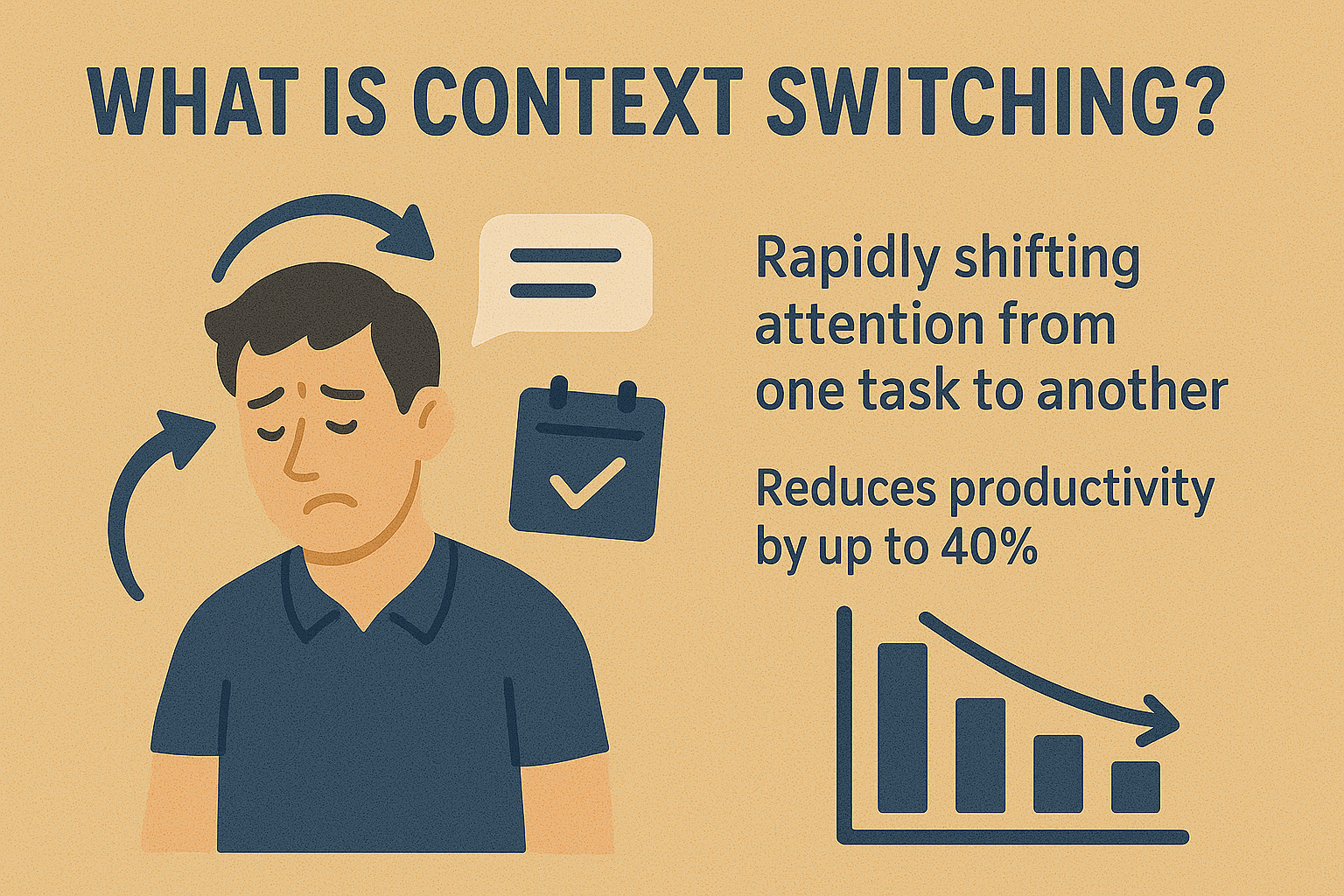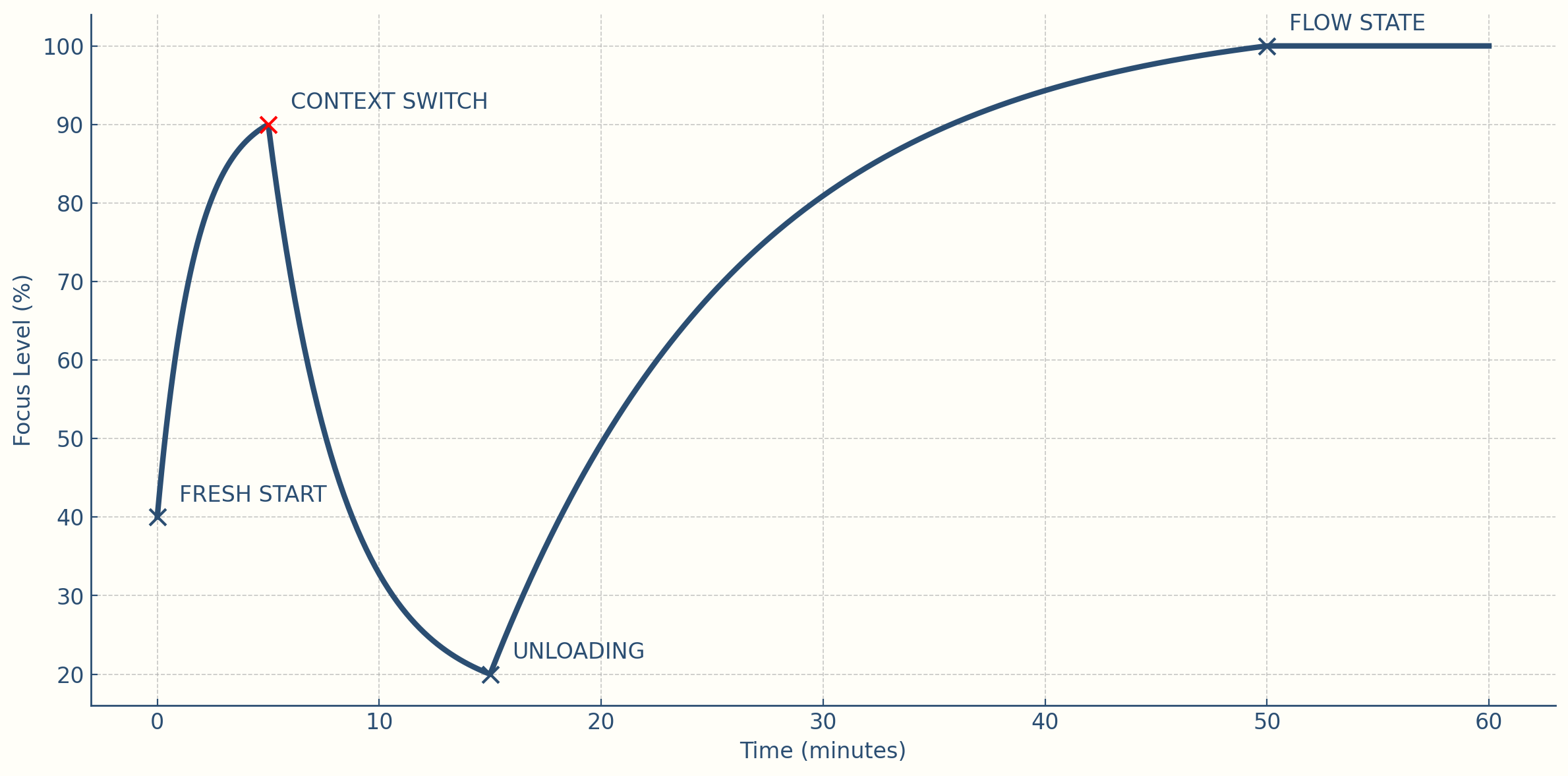
What Is Context Switching? And Why It’s Draining Your Focus and Output
In today’s fast-moving digital work culture, one phrase keeps showing up in productivity conversations: context switching.
You’ve probably heard it.
You may have blamed it for why your brain feels scrambled at the end of the day.
And you’re not wrong.
But what exactly is context switching?
How does it affect your work?
And why does it make people feel like they’re “working all day but getting nothing done”?
Let’s break it down.
What Is Context Switching?
Context switching is when your brain shifts from one task to another, often rapidly, without completing the first task.
It’s common in knowledge work – especially among developers, designers, managers, and creators – where incoming messages, meetings, and notifications interrupt deep work sessions.
Each time you switch, your brain must offload what it was doing, load the new context, and later (if you’re lucky) reload the original one.

It’s Not Just a Distraction – It’s a Cognitive Cost
Research from the American Psychological Association and studies at Stanford show that multitasking significantly reduces productivity – often by as much as 40%.
Here’s why:
- It takes an estimated 23 minutes and 15 seconds to get back into a deep task after being interrupted (according to Gloria Mark, professor of informatics at UC Irvine).
- Your working memory gets fragmented, making it harder to track where you left off.
- You’re more likely to make mistakes or forget key details.
- You feel mentally depleted because your cognitive load increases each time you switch.
So even if you’re “busy” all day, your brain might have been spread across 8 half-finished tasks – none of them getting your full attention.
Common Causes of Context Switching at Work
- Chat notifications (Slack, Teams, Discord)
- Email checking out of habit or pressure
- Frequent meetings, especially if they’re unrelated to each other
- Micromanagement, where people are pulled into discussions before they’ve finished their current task
- Lack of clarity or task prioritization
- Multitasking as a default work habit
Symptoms You’re Context Switching Too Much
- You feel like you worked all day but “got nothing done”
- Tasks stretch longer than they should
- Your to-do list is filled with half-finished work
- You can’t remember what you were doing before a meeting
- You constantly feel like you’re “behind” even though you were busy
If this sounds familiar, you’re not lazy.
You’re likely suffering from mental fragmentation caused by too many switches.
Context Switching vs. Task Switching
These terms are often used interchangeably, but there’s a subtle difference:
- Task switching is when you intentionally move from Task A to Task B.
- Context switching includes the mental overhead required to fully shift attention and working memory from one subject to another.
For example:
Switching from writing an article to debugging a database query is context switching.
Switching between writing and editing the same article is task switching – within the same mental context.
The former is much more expensive cognitively.
Why It Matters for Teams and Leaders
Context switching isn’t just a personal productivity issue – it’s a systemic workflow problem.
If your team structure, tools, and communication norms create frequent switches, you’re burning productivity silently.
Leaders should consider:
- Blocking focus time
- Reducing unnecessary meetings
- Creating clearer handoffs instead of “pinging” people mid-task
- Using visible timelines so fewer status updates are needed
Final Thoughts
Context switching drains your focus, your energy, and your output.
You may not feel it in the moment – but the long-term cost is real: burnout, slow execution, and fragmented work.
Start by tracking where your attention goes.
Protect your focus like a resource – because it is.
The fewer times your brain has to shift gears, the more powerful it becomes.